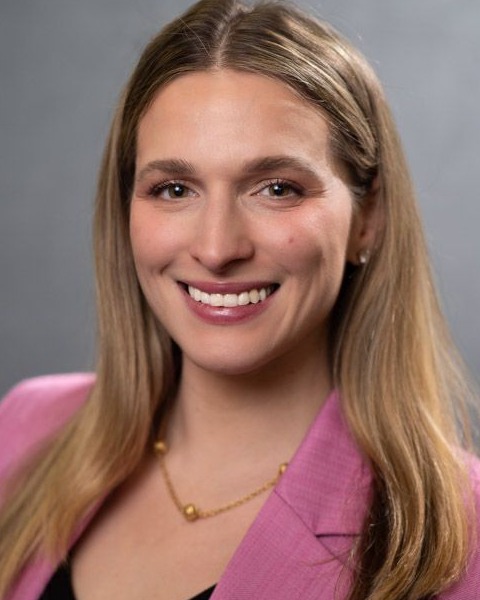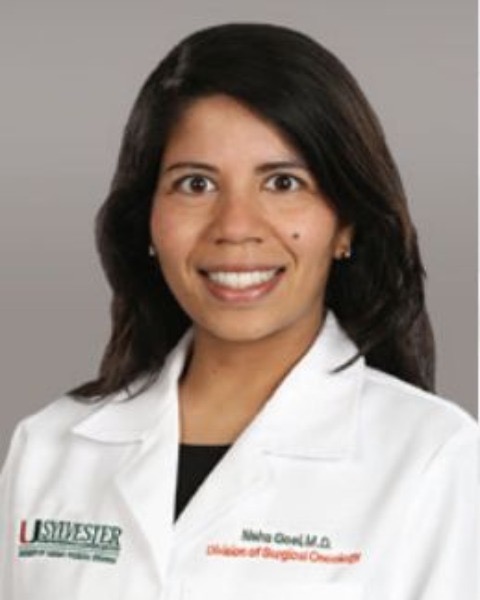Disparities in Surgical Oncologic Care
29: Lower Social Support Predicts Higher Cortisol for Breast Cancer Patients in Disadvantaged Neighborhoods

Alexandra E. Hernandez, MD, MPH
Research fellow
University of Miami
Miami, Florida, United States
Alexandra E. Hernandez, MD, MPH
Research fellow
University of Miami
Miami, Florida, United States
Alexandra E. Hernandez, MD, MPH
Research fellow
University of Miami
Miami, Florida, United States- IA
Ibane Aizpurua, MS
Postdoctoral Scholar
University of the Basque Country, Department of Basic Psychological Processes and their Development, United States - PB
Peter A. Borowsky, MD
Postdoctoral Scholar
Sylvester Comprehensive Cancer Center, University of Miami Health System, United States - MR
Molly Ream, MS
Doctoral Student
Sylvester Comprehensive Cancer Center, University of Miami Health System, United States - MA
Michael Antoni, PhD
Professor
Sylvester Comprehensive Cancer Center, University of Miami Health System, United States 
Neha Goel, MD, MPH
Associate Professor of Surgery
Dewitt Daughtry Department of Surgery, University of Miami, Miami, Florida; Sylvester Comprehensive Cancer Center, Miami, FL
Miami, Florida, United States
Abstract Presenter(s)
Submitter(s)
Author(s)
Neighborhood disadvantage is a form of social adversity that negatively affects breast cancer (BC) survival. However, within neighborhoods, social conditions such as social support vary significantly. Prior literature suggests that social support is not only beneficial for BC patients in enhancing treatment effectiveness and improving quality of life, but may also influence survival. This might be due to influences of social support on reducing physiological stress mechanisms. To better understand this, we evaluated the role of social support and neighborhood disadvantage on cortisol, a physiologic marker of stress in BC patients.
Methods:
From 2006-2013, women with stage 0-III BC were enrolled 2-10 weeks post-surgery and before initiating adjuvant treatment in a study examining stress and stress management processes. Women provided an evening (PM) serum cortisol sample and completed the Social Provisions Scale (SPS). Home addresses were used to link the Area Deprivation Index (ADI), a validated measure of neighborhood disadvantage. Multivariable regression assessed the relationship between SPS scores, ADI and cortisol controlling for age, surgery type, and receptor status. To assess significant interactions, the Johnson–Neyman technique was used for moderation analysis.
Results:
Of the 178 participants, mean age was 54±10 years. 43.8% were Hispanic, 41.6% White, and 9.0% Black. 24.7% lived in disadvantaged neighborhoods (ADI 4 -10). On multivariable regression, high ADI predicted greater cortisol (β= .22, p=.01) and the interaction between ADI and SPS predicted lower cortisol (β= -.22, p=.02) (Table 1). Specifically, the simple slope test showed that the conditional effect of ADI on cortisol was statistically significant at low (M = - .88; p < .001) and middle levels (M = .02; p < .05) of SPS, while no significant effects were found at high levels (M = .91; p = .82). Thus, when SPS was average or one standard deviation below average, patients living in disadvantaged neighborhoods had higher cortisol levels than patients living in advantaged neighborhoods.
Conclusions:
Our findings suggest that lower social support negatively influences the relationship between neighborhood disadvantage and serum cortisol levels. This further implicates that a patient’s neighborhood social environment has physiological consequences associated with stress and, social support, a modifiable element, may be a target for intervention. Future studies associating these factors with clinically relevant outcomes are warranted.
Learning Objectives:
- Describe the relationship between neighborhood disadvantage and breast cancer survival, emphasizing the role of social support.
- Define the physiological impact of social support and neighborhood environment on stress markers, specifically cortisol, in breast cancer patients.
- Appreciate the potential benefits of interventions targeting social support to improve physiological outcomes in breast cancer patients residing in disadvantaged neighborhoods.
